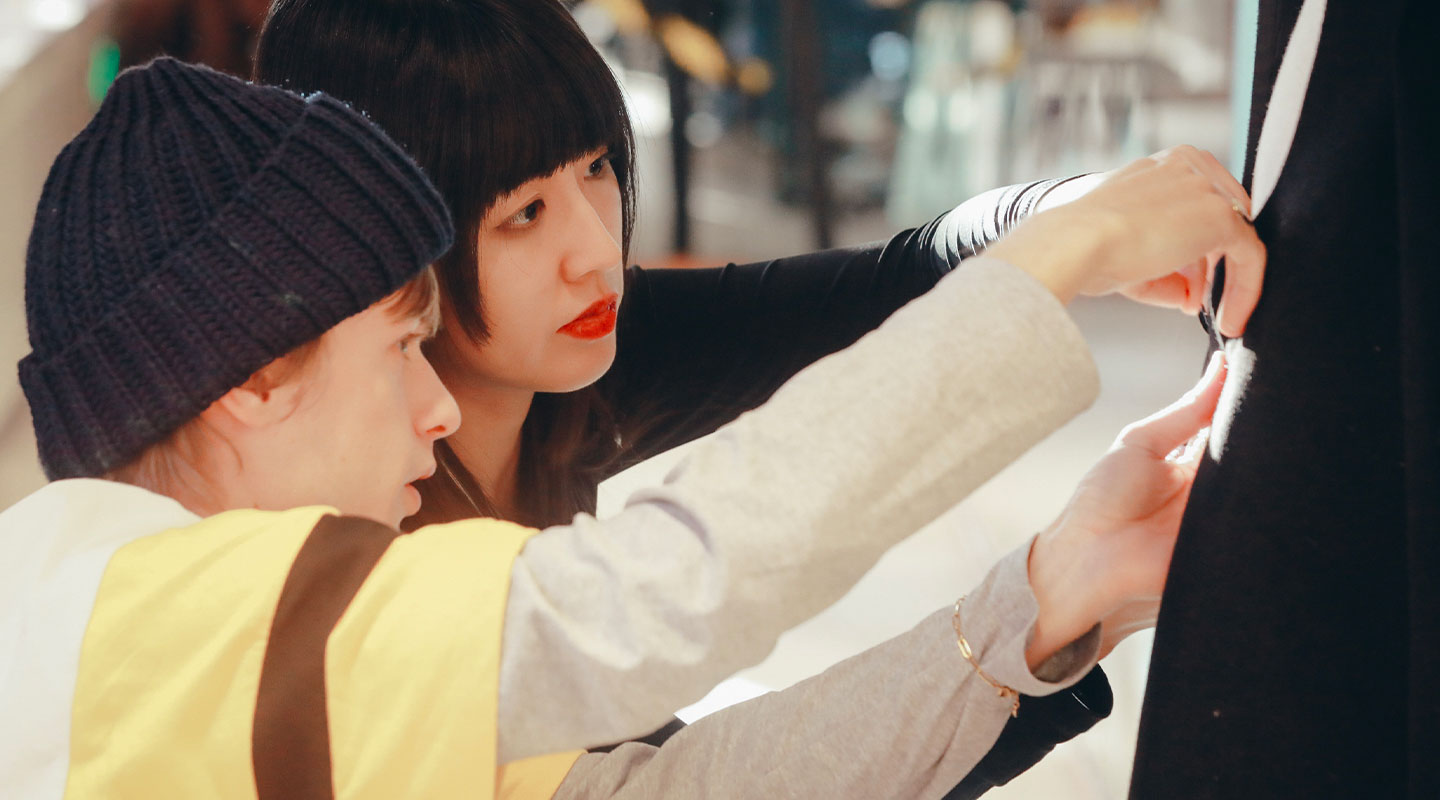What to do when your first fashion show goes totally off script: A survival guide
With a shoestring budget and every setback imaginable, a student fashion show proves that creativity thrives under pressure
Fashion has a truth: when the spotlight shines and things don’t go as planned, that’s when the real show begins.
For the first-year students at Istituto Marangoni Shanghai behind the Eclipse runway, chaos became the catalyst for creativity. With no budget, last-minute model dropouts, and tech failures just hours before showtime, their debut fashion event pushed every limit. Yet, amid the scramble, something powerful emerged: creativity sharpened by constraint, teamwork forged under pressure, and a runway brought to life by sheer ingenuity.
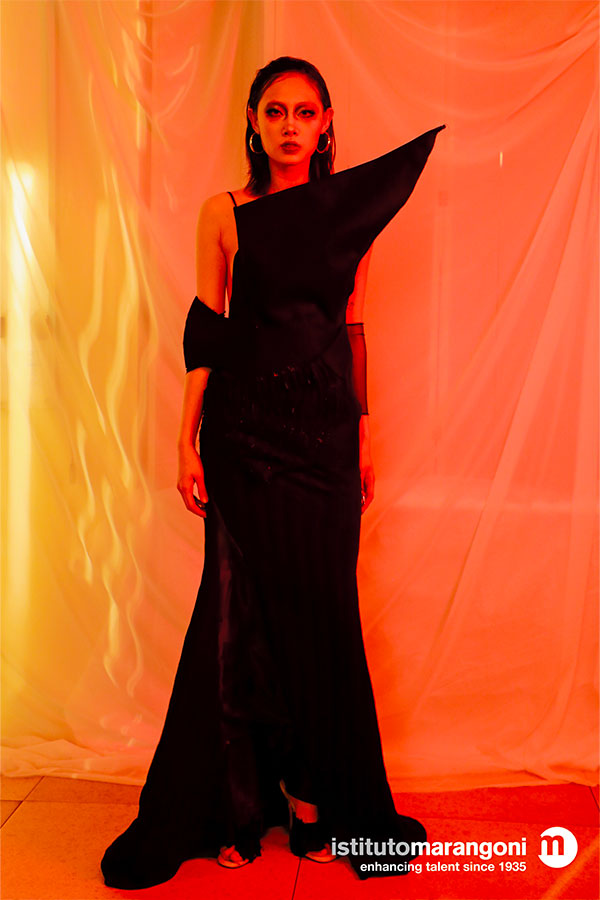
Design by Fan Junhan, styled and made up by Zhang Yuchu, featuring model EntongSo, if your first fashion show goes wildly off script, don’t panic. Eclipse proves that disruption can spark innovation. Here’s what went down, and how it might just become your ultimate survival guide.
Budget? What Budget? How to Make a Fashion Show Happen With Zero Funds and Infinite Creativity
Amid the hustle and bustle, first-year students from the Black Swan Project unveiled Eclipse: a dazzling, student-led fashion show that transformed their school into a runway of innovation. Tasked with organising the event entirely on their own, the team navigated numerous challenges. Still, they ultimately emerged with both a successful showcase and a strong sense of unity, along with newfound skills and resilience.
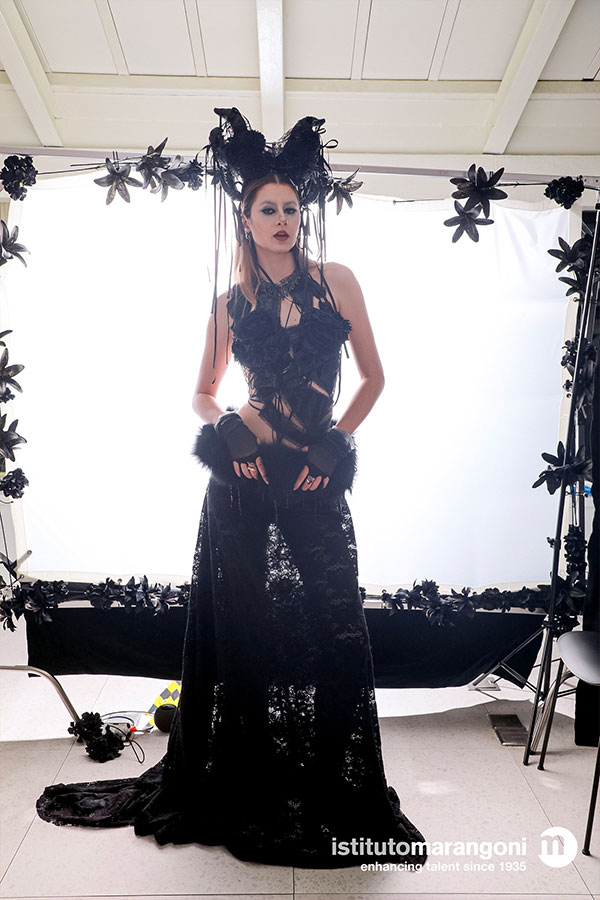
Design by Sofiia Kopylova, styled by Shao Yijia, with makeup by Zhang Qiman, hair and modeling by Sofiia Kopylova
The journey began with high ambitions but quickly hit obstacles. Budget constraints loomed large; their initial ideas for lighting and venue rentals clashed with their zero-budget mandate. In response, the students learned to be resourceful. Scrapping their initial plans, they transformed the Istituto Marangoni Shanghai school into a dynamic runway using projectors and fabrics.
Models, Emerging Fashion Designers, and a Sound System That Decided to Take a Break: The Art of Adapting Under Pressure
Coordination chaos struck next. With designers, organisers, and stylists juggling academic deadlines, scheduling conflicts threatened to derail the project. The team adopted agile communication, relying on shared digital tools and weekly check-ins to prioritise tasks.
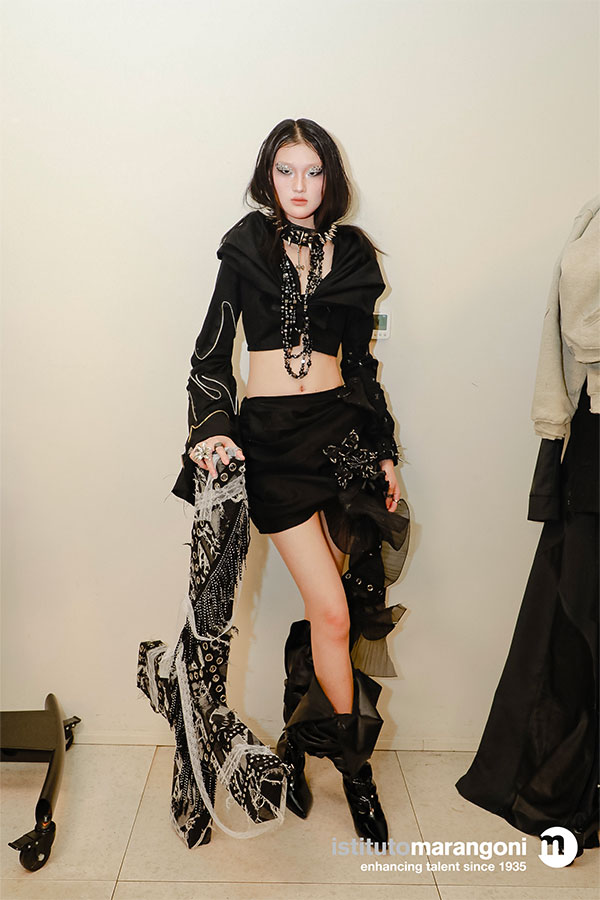
Design and styling by Zhang Jianing, with makeup by Zhang Qiman, hair by Yao Yutong, featuring model Zhang Xinting
When models and designers dropped out hours before showtime, the students discovered the importance of adaptability. Team members took on dual roles, with some students stitching last-minute garments while managing backstage logistics. “Eclipse pushed us to try,” they said.
Technical glitches during rehearsals—such as a sound system crash—forced the group to embrace collaborative problem-solving. These crises forged camaraderie as team members pooled their skills. These hands-on lessons in patience and delegation revealed hidden talents and strengthened their trust in one another.
When Lights, Shadows, and 15 Avant-Garde, Sustainable Looks Meet: A Fashion Show in Full Force
Eclipse debuted with 15 avant-garde looks crafted from sustainable materials. The climax of the show featured a captivating interplay of light and shadows, highlighting the students’ creative abilities.
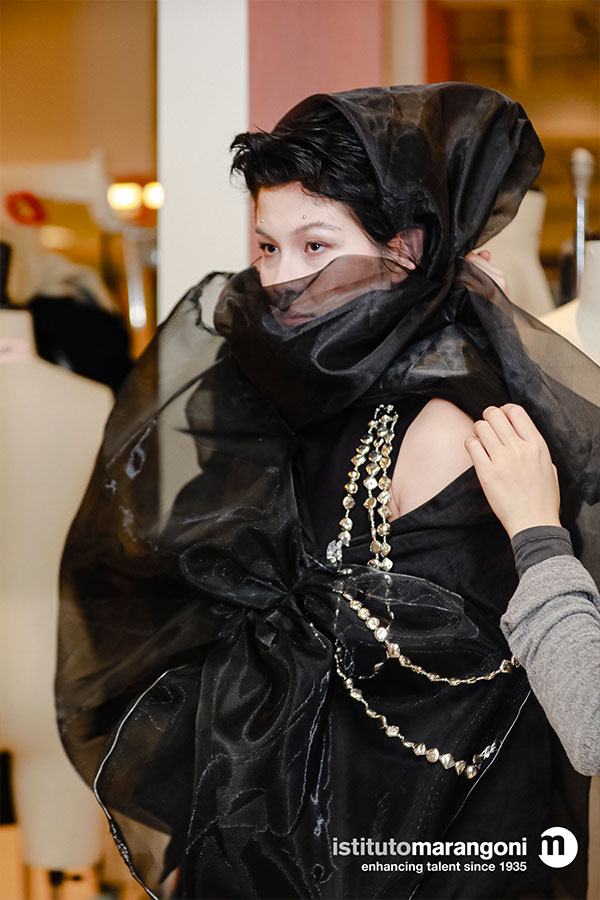
Design by Wang Yanfei, styling by Shao Yijia and Can Zhiying, makeup by Zheng Mili, hair by Shao Yijia, featuring model V
Reflecting on the experience, participants shared, “We didn’t just plan a show; we built a team.” Through challenges, we developed trust, adaptability, and a shared pride in our collective triumph.
From Textbooks to Runways: Redefining the Boundaries of Fashion Education
“Traditional teaching methods typically involve presenting students with theoretical knowledge and technical skills, which they are later expected to assess for their usefulness. This approach contrasts with how we learn through play as children and how professionals acquire knowledge throughout their careers. In these scenarios, individuals tend to engage in activities and seek solutions as challenges arise,” commented Kristian Steinberg, Director of Education at Istituto Marangoni Shanghai. He highlighted how Eclipse enabled emerging designers and fashion professionals to develop hands-on skills in a way that diverges from conventional educational practices, yet proves to be highly effective and aligned with real-world learning.
Styling and art direction by Philip Klempau, under the guidance of tutor Bell Wong
“Children often do this in a flexible and open-ended manner, exploring various possibilities, curating ideal outcomes, and subsequently problem-solving to achieve those goals. This approach sets the context first, and technical and theoretical solutions fall into place as their usefulness becomes evident. Creativity, resourcefulness, collaboration, and ownership of one’s learning journey are paramount for us. These qualities help young creators prepare for the industry and remain adaptable in a fast-changing world,” Steinberg added.
When Failure Becomes a Step: Lessons in Adaptability and Teamwork
“Failure wasn’t an endpoint. It was a step,” concluded the students from Istituto Marangoni Shanghai, who planned the fashion show. “Through challenges, we gained confidence in uncertainty, trust in collective effort, and pride in pursuing our visions.” Eclipse was a testament to the strength of unity under pressure, lighting the way for a bright future and next year’s innovators.


